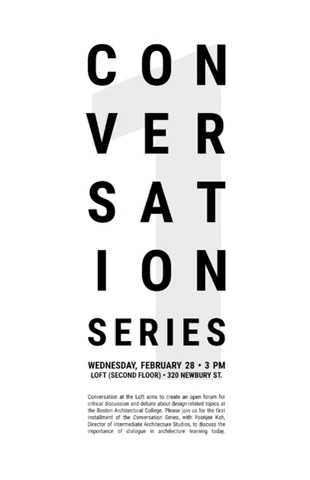Instructors Jessica Wolff & Lily Wubeshet
The 50 acre site is located in the Great Valley Corporate Center and Valley Creek Park in Malvern, Pennsylvania. This is a suburban site located approximately 35 minutes northwest of Philadelphia, Pennsylvania. Part of the site is located on the former site of a restaurant and corporate building. Students will repurpose this part of the site for either outdoor programming or a new building program. The rest of the site is part of Valley Creek Park and includes a playground, open fields, picnic pavilions, tennis courts, a historic building as well as a creek and forested area. The area is surrounded by a mix of residential uses, a mix of retail and institutional uses and a mix of business types. The site is near main access roads and train lines into Philadelphia.
Instructor: Thomas Sterling
Shifting Baseline Syndrome (SBS) was first coined by French marine biologist Daniel Pauly to describe our general inability to perceive environmental degradation because we do not know or are unable to remember what the natural environment looked like in the past. As our ‘baseline’ shifts with each successive generation, so does our ability to register how the environment has been transformed through anthropogenic, human forces. What we see today as “natural” would likely seem alarmingly unnatural to someone from just a century ago. In a sense, SBS describes a crisis of recognition and comprehension brought on by the instability of our collective, cultural memory.
The difficult task of recognizing the potential impact of the climate emergency requires a commensurate recognition of the deep entanglements between architecture, culture, the landscape, and the larger ecological systems that mediate their interactions. Shifting Baselines | Rising Seas asks students to deploy architecture in the service of mending this crisis of recognition by calling attention to and keeping a record of the many dynamic and often contradictory thresholds that we use to define our relationship to the environment. Students will identify and interrogate the physical, temporal, and conceptual thresholds that reinforce this crisis of recognition: human and non-human, land and sea, earth and sky, weather and climate, hot and cold, wet and dry. Through the design of a climate change observatory, students will design an architectural intervention that measures, transcribes, and preserves the next two centuries of ecological volatility, planetary transformation, and cultural evolution.
Instructors Karl Pops and Allan Delesantro
Boston is in a housing crisis. Boston is now the third most expensive rental market in the United States. The city has an estimated shortage of 38,000 housing units. At the current pace of housing production, that number will increase to 90,000 by 2030. The city’s economic growth has not been met with proportionate housing growth and the mounting crisis is now impossible to ignore.
Meanwhile, resistance to new housing production is strong and coming from diverse political and cultural groups. Enfranchised communities put pressure on political representatives to restrict development rights, protect open space and enshrine single family housing with exclusionary zoning. Disenfranchised communities fear new infrastructure and housing development will negatively impact neighborhood authenticity, culture and affordability.
This studio explores the tension between two major pressures weighing on cities like Boston - the dire need for affordable housing, and the legitimate and well-meaning concerns of communities who view new housing production as undermining the quality of the urban environment. Where in the city can we build more housing, and how can we balance that with the need for an authentic, livable city full of ecosystem services and climate resilient green space?
Instructor Sungwoo Jang
"Synergy" originated from the Greek "synergos," which means "working together."1 Hence, the emergence of new buildings amidst existing and/or new structures inherently generates "synergy." This urban byproduct can reinforce the existing neighborhood characters, unveil concealed patterns, or even redefine the spatial identity of a city. Through thoughtful configuration, arrangement and geometrical deformations of buildings, this studio aims to maximize the positive synergistic effect for the community's and broader ecology's proliferation.
This studio will delve into wide design scales, encompassing from site planning to the unit design, with a central focus on maximizing synergistic effects. While designing a mixed-use residential block for "live+work+interact" on a 2.9-acre land, students will gain proficiency in recognizing visible and latent urban patterns and devising formal and thermal tactics that seamlessly integrate cultural, ecological, and economic priorities with their individual creative visions.
Incorporating site conditions that are visible and tangible, such as urban edges and site topography, as well as the invisible and sensory, such as sunlight, heat flow, and noise from the street, the studio aims to produce multiple zones with different spatial and climatic characteristics to host a broader range of programs and activities. Students will cultivate "gradient" conditions, spanning from; public to private instead of demarcated separation between spaces; hot to cold instead of all-encompassing thermal wraps that isolates humans; diverse unit mixes for various family types instead of targeting a particular group; hard to soft to mitigate the urban landscape's dichotomy between inside and outside.
Instructor Megan Gallahue
Recreation spaces are one of our primary access points to the New England landscape. At current, such green open spaces as sports fields, golf courses, and conservation lands are suggestive of a passive consumption of landscape views; separate from daily life, inaccessible to many, and maintained as static backdrops for exercise regimes, or restored native habitats sequestered from most human activity. In the imagining of a post-wild, climate-changed future, it is clear that designers must look beyond these binary forms in search of a spatial language encouraging meaningful new ways of inhabiting the landscape alongside others in the world. Using the golf course as a site to reflect on and draw from, the studio will develop proposals for community living centers for older Boston residents.
As a social paradigm, the prototypical golf course runs counter to the idea of democratic public space through explicit racialized, gendered, and class-based exclusion. As an aesthetic form, it is both keenly aware of site aspects such as terrain and viewsheds, and yet made sterile, endlessly replicable, and devoid of environmental context. Similarly, living centers for older adults are highly privatized, restrictive, and alienating, rendering human processes of aging invisible, and disempowering older adults. The re-invigorated ecology of the golf course demands a rigorous approach to “natural” phenomena such as topography, water, plant and animal life, while insisting that the social phenomenon of aging must be equally integrated into new spatial formations for living.
Instructors Tara Pearson and Devon Miller
This semester you will approach the site through the lens of identity. How can you design and develop a site in response to the identity of the area in which it exists? Every design decision you make needs to consider identities perceived on site as well as the local and regional identities the site is impacted by.
Asking the following questions will begin to set the framework for your approach this semester.
What is identity? What is the identity of a space? Who defines it? How much does it depend on physical characteristics, and how much on local history and current use? Adding further complexity to the question of how one identifies a place’s identity, you will be tasked with doing so without being able to visit the site in person. For The Image of the City, Kevin Lynch interviewed locals to ask how they saw parts of their cities and then catalogued what physical characteristics he saw in those areas to see how they compared. You will be challenged to do this without the conversation. To approach this, one of your first tasks this semester will be to identify and walk an area in your locality that is roughly the size of the studio site. This will act as a scale study; it will also require you to carefully catalog the elements that make the area you chose unique, why you chose it, and what you believe is its identity. This will give you a baseline for what to look for in the local area of the studio site when trying to determine its identity. This identity catalog will be overlaid with several layers of data—geographic, demographic, climatic, et cetera, throughout your initial research phase. This research will build the foundation for your design approach throughout the semester.
Instructors Mateo Yang and Stefan Di Leo
No building exists in a vacuum, devoid of contextual relationships with its surrounding physical, ecological, economic, and social fabric. Rummaging through and synthesizing the various narratives influencing a building is key to developing not only a physical form, but a body that enmeshes itself into the unfolding narratives of the city. In this course, we will have ongoing conversations on what it means to build a structure that is culturally and historically significant. Do we break with the past or harness embodied energy to create a hybrid creature? How do we consider material lifespans and temporal occupation into our nascent designs? The designs for this studio will consider flood resiliency and carbon neutrality at the core of our design strategies, while employing a deeper reading of site history and cultural narratives to direct design toward unique, site-based and culturally sensitive interventions. How might a new public architecture along the waterfront serve to bridge these stories of both present and latent site histories? What better, possible trajectories can be set in motion with architecture? How can we re-invigorate natural systems to ameliorate climate change that was caused by these cultural and economic influences? Can we embrace and engage these cultural and economic influences in novel architectural design and program?
Instructor Santiago Mota
Site! studio continues operations within the domains of Harvard Forest, situated in Petersham, Massachusetts. This expansive forest, spanning 4,000 acres, is an integral part of Harvard University's Faculty of Arts and Sciences, home to various research facilities, and the Fisher Museum. Research conducted at the forest covers a wide array of subjects including biodiversity, conservation, environmental change, and the complex interactions within Earth system science. Significantly, since 1988, the Harvard Forest has been recognized as a Long-Term Ecological Research (LTER) location, funded by the National Science Foundation (NSF ) and has served as the Northeast Core site for the National Ecological Observatory Network (NEON) since 2011. The continuous documentation of environmental transformations found at the Harvard Forest offers an unrivaled setting for students to study and comprehend a site, both from a historical viewpoint and within the context of the design disciplines. Students are highly encouraged to tap into the rich history and wealth of data available for this unique location.The Fisher Museum's Diorama collection , for example, serves as a remarkable starting point for reflection. It underscores the importance of long-term documentation in observing landscape changes, as captured in highly detailed models that illustrate the land's patterns and mosaics at various points in time.

















![Image Credit: Water and Power Associates. (1888). Devil's Gate [Early view of Devil's Gate showing the Arroyo Seco at its most narrow point]. Retrieved January 12, 2021, from https://waterandpower.org/museum/Early_Views_of_Pasadena_5_of_8.html](https://images.squarespace-cdn.com/content/v1/5afb4215c258b403e452ac1c/1610671931850-DOJE8I0VQ8KIVYPH8IOD/Devils+Gate.jpg)





































